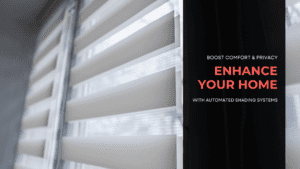Key Highlights
- It is crucial to choose compatible models to avoid flickering and potential damage.
- Consider factors like neutral wire requirements, bulb type, and smart home ecosystem.
- Proper installation involves ensuring correct wiring and following manufacturer guidelines.
- Explore the pros and cons of integrating intelligent lights with dimmer switches to make an informed decision for your smart home setup.
Overview
Are you looking to upgrade your home lighting with intelligent lights but unsure about their compatibility with your existing dimmer switches? Many homeowners wonder whether they can use these modern lights with traditional dimmer switches. This blog will explore the compatibility between intelligent lights and dimmer switches, addressing common questions and providing valuable insights. We’ll cover everything you need from understanding the basics to installation tips and pros and cons.
Understanding Intelligent Lights and Dimmer Switches
Before we discuss compatibility, let’s establish a clear understanding of intelligent lights and dimmer switches. Both devices aim to control light output but achieve this through different mechanisms. Intelligent lights, often referred to as smart lights or smart bulbs, are designed to be controlled remotely or through automation. Dimmer switches, on the other hand, have been a staple in homes for decades, allowing manual adjustment of light intensity.
What Are Intelligent Lights?
Intelligent lights, broadly known as smart lights or smart bulbs, represent a significant leap forward in home lighting technology. These marvels of engineering come equipped with embedded technology that enables seamless integration with other smart home devices and apps. Imagine controlling the brightness, color, and even scheduling of your lights using just your smartphone– that’s the power of intelligent lights.
These lights communicate wirelessly, often using Wi-Fi or Bluetooth, receiving commands and sending data about their status. This ability to interact with other devices and be controlled remotely opens up a world of possibilities for creating a truly personalized and automated lighting experience.
How Do Dimmer Switches Work?
Traditional dimmer switches operate by regulating the amount of electricity that flows to a light fixture. By increasing or decreasing the voltage, they control the brightness of the connected lights. This process was revolutionary when first introduced, replacing simple on/off switches and providing a way to create ambiance and save energy.
However, it is essential to understand that these traditional dimmer switches were designed for conventional incandescent bulbs. They work by directly manipulating the electrical current reaching the bulb, and this interaction between old and new can sometimes create unexpected issues.
For installations that go beyond simple dimming compatibility, Boston Automations’ intelligent lighting solutions pair tunable white and color-changing fixtures with centralized control for a fully adaptable lighting experience.
Compatibility Between Intelligent Lights and Dimmer Switches

While both technologies revolve around light control, their compatibility isn’t always straightforward. Connecting intelligent lights to traditional dimmer switches can lead to compatibility issues, primarily because they work on different principles. While dimmer switches regulate voltage to control brightness, intelligent lights often have internal circuits that don’t always respond well to voltage fluctuations.
Factors Affecting Compatibility
Several factors can determine whether your intelligent lights will function correctly with a dimmer switch:
- Neutral Wire Requirement: Many intelligent lights require a neutral wire for their smart functions. If your existing switch doesn’t have a neutral wire connection, you might encounter problems.
- Dimmable Bulbs: Using dimmable smart bulbs is crucial. Non-dimmable bulbs are incompatible with dimmer switches and might not function correctly.
- Smart Switch Compatibility: For optimal performance, consider using a smart dimmer switch specifically designed to work with intelligent lights.
- Hub or Bridge Requirement: Some intelligent lights require a separate hub or bridge to communicate with other smart home devices.
Identifying Compatible Models
Ensuring compatibility requires careful consideration of the specifications of both your intelligent lights and the dimmer switch.
| Feature | Intelligent Lights | Dimmer Switch |
| Dimmable | Look for “dimmable” on the bulb packaging | Ensure dimmer switch specifies compatibility with LED or CFL bulbs |
| Neutral Wire | Check manufacturer specifications | Consult an electrician to verify wiring |
| Smart Home Hub | Determine if the bulb needs a hub | Choose a switch compatible with your existing hub, if applicable |
| App Control | Verify dimmer switch compatibility with the bulb’s app | Ensure both devices are on the same network and can communicate |
When selecting intelligent lights and dimmer switches, refer to the manufacturers’ websites or product documentation for compatibility information.
Check out our ultimate guide to smart outdoor lighting solutions covers how wireless controls and weather-rated fixtures work together for reliable, low-maintenance performance.
Installation Tips for Intelligent Lights on a Dimmer Switch
Having determined compatibility, let’s proceed with some installation guidelines. Before installing intelligent lights on a dimmer switch circuit, it’s crucial to take several precautions. This section will provide a pre-installation checklist and a step-by-step guide to ensure a seamless and safe installation process.
Pre-Installation Checklist
Before you begin the installation, go through this checklist:
- Turn Off the Power: Always switch off the power to the circuit at the breaker box before handling any wiring. Safety should be your top priority!
- Check Wiring Compatibility: Ensure your chosen dimmer switch is compatible with your existing light fixture’s wiring.
- Gather Necessary Tools: You will need basic electrical tools like a screwdriver, wire strippers, and a voltage tester to complete the installation.
- Read Manufacturer Instructions: Refer to the manuals of both your smart lights and dimmer switch for specific instructions.
Step-by-Step Installation Guide
Follow these general steps for installing your intelligent lights with a compatible dimmer switch:
- Remove the Old Switch: Unscrew and carefully disconnect the wires from the old light switch.
- Connect the New Dimmer Switch: Connect the wires to your smart dimmer switch, ensuring that each wire is securely fastened.
- Install the Smart Bulb: Install your chosen intelligent bulbs into the light fixtures.
- Restore Power: Carefully restore power to the circuit at the breaker box.
- Configure Your Smart Dimmer Switch: Use the manufacturer’s app or instructions to connect the switch to your home’s Wi-Fi network and configure its settings.
Pros and Cons of Using Intelligent Lights with Dimmer Switches

Combining intelligent lights with dimmer switches can offer enhanced control and convenience for your smart home lighting system. As with any home automation decision, carefully weighing the advantages and potential drawbacks of integrating these components is important.
Advantages of Integration
The integration of intelligent lights with dimmer switches offers a range of benefits for homeowners:
- Enhanced Lighting Control: Combining both technologies unlocks advanced lighting control, allowing you to fine-tune brightness levels, set schedules, and create personalized ambiance.
- Increased Convenience: Control your lights with your voice using popular virtual assistants like Alexa or Google Assistant, adding a new level of convenience to your daily routines.
- Seamless Automation: Program your lights to turn on and off at specific times, or create custom scenes that adjust brightness levels based on your preferences.
Potential Drawbacks to Consider
While the integration offers numerous advantages, it’s wise to consider potential downsides:
- Compatibility Issues: Not all intelligent lights and dimmer switches are completely compatible. Using mismatched products can lead to flickering, reduced bulb lifespan, and functionality issues.
- Complexity and Cost: Setting up a smart lighting system with dimmer switches can be more complex than traditional setups. The cost of smart bulbs and compatible dimmer switches can add up, especially when outfitting an entire home.
- Potential for Conflicts: Conflicts can arise if multiple smart home devices attempt to control the same light fixture.
Elevate Your Space!
Integrating intelligent lights with a dimmer switch can enhance your lighting experience, but compatibility is key. Understanding how these technologies work together and following proper installation guidelines is crucial to avoid any potential drawbacks. Remember to check for compatibility factors and identify suitable models before proceeding.
If you have any questions or need assistance in setting up this system, don’t hesitate to get in touch with us.
Frequently Asked Questions
Can Using a Non-Compatible Dimmer Damage Intelligent Lights?
Yes, using a dimmer switch incompatible with your smart bulbs can potentially damage them. This mismatch can lead to electrical conflicts that might cause the bulbs to flicker, overheat, or fail prematurely.




